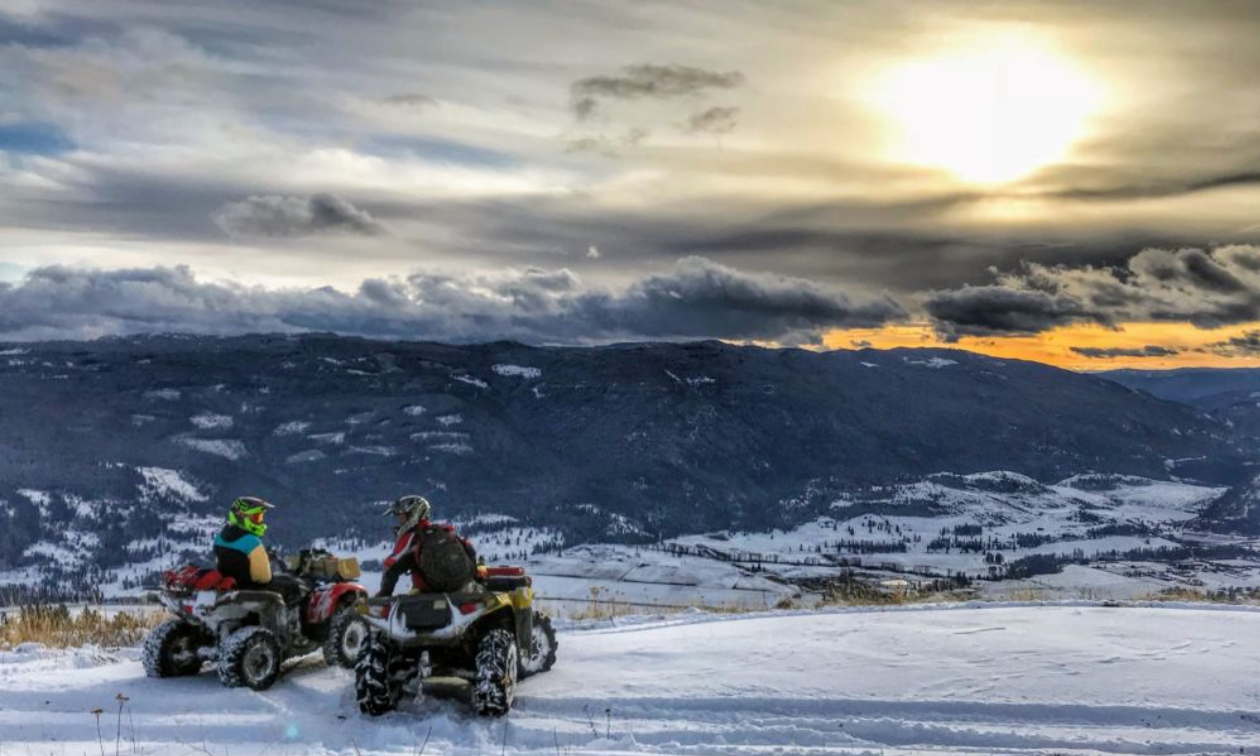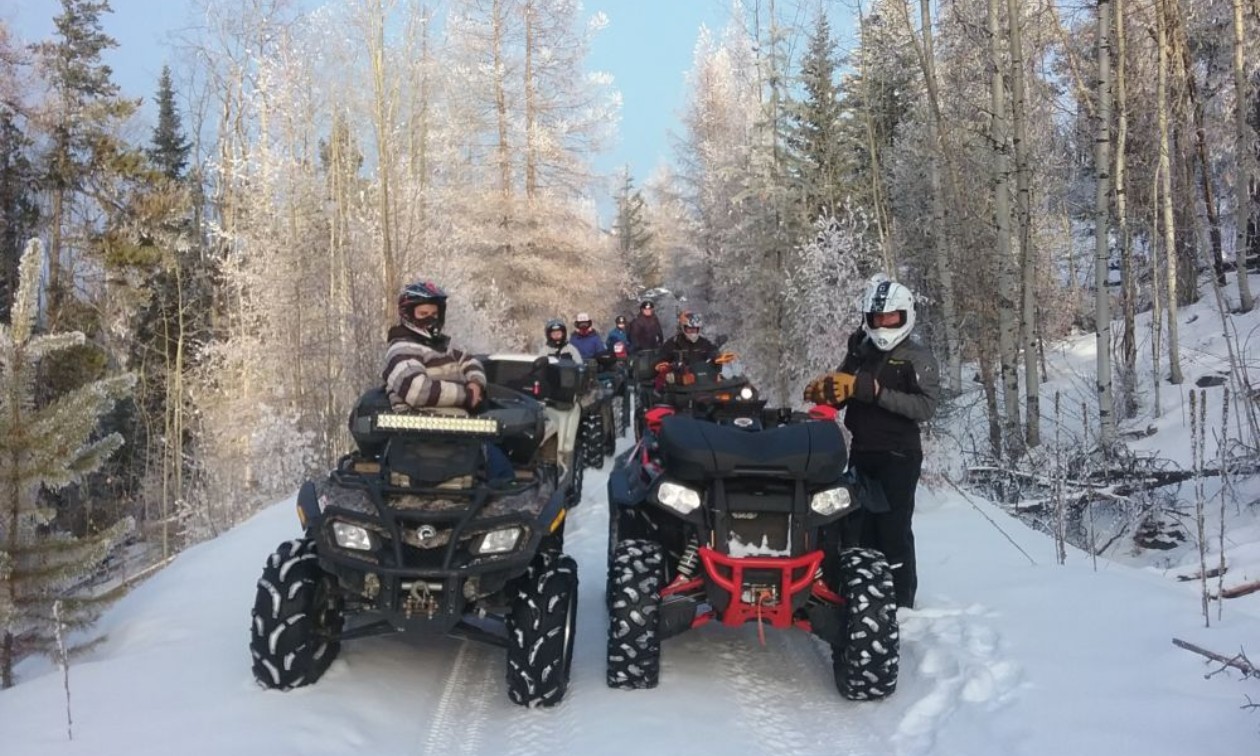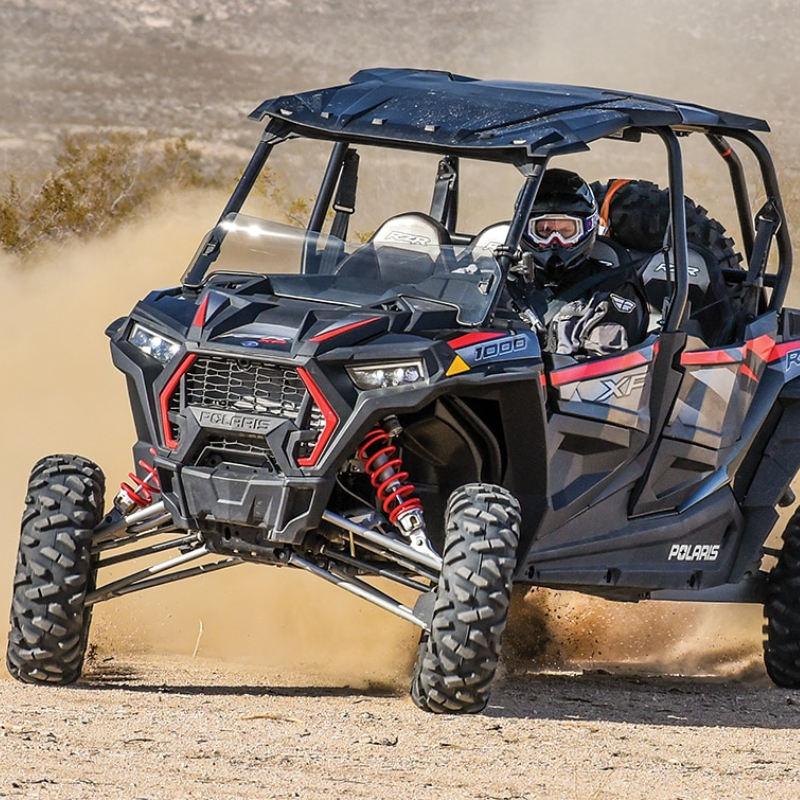Winter is typically the offseason for most ATVers—except for some. Many riders take the winter off to pursue other forms of recreation or just hunker down to stay warm. Winter is the perfect time to prepare your machine, safety gear and emergency supplies so when spring rolls around, you’re ready to hit the trails.
Preparation
Being prepared every time you head out riding means being able to repair small breakdowns, navigating your way home after getting turned around, being able to get a message to family from far outside cell coverage and having the supplies necessary to stay warm and dry should you become stranded.
Your Machine
No one wants to be towed home from a ride, or worse yet, stranded a long way from anywhere. Now’s the time to be giving your machine a good once over. It’s often possible to catch small problems before they become big issues by taking a good look yourself or by having it checked over at your local dealers. Don’t forget that trailside repairs are sometimes required. Assemble a toolkit with the right size wrenches for your machine.
Riding Gear
A helmet, eye and face protection, gloves, long sleeve shirts or a jacket, long pants and good boots are going to improve your comfort on rides and provide extra protection should you be bucked off. Depending on your ability, terrain you ride and how you ride, you may want to look at additional protection like a chest/back protector, knee and elbow pads.
If you’ve owned your helmet a long time or if it’s taken a spill or two, it’s definitely time to look at a new lid. Helmet technology has progressed rapidly in the last decade as a result of all the research into concussion and brain injury. Top end powersport helmets now feature an amazing array of technology to protect your grey matter in high speed, low speed and rotational impacts. It’s recommended you replace your helmet every five years or if it’s ever sustained a major impact. Visit your local shop and bring your helmet for a quick inspection.

Being prepared every time you head out riding means being able to repair small breakdowns, navigating your way home after getting turned around, being able to get a message to family from far outside cell coverage and having the supplies necessary to stay warm and dry should you become stranded. — Photo courtesy Clint Ingham
Chainsaw or Hand Saw
What if you ride up a trail with no exit and find a freshly downed tree blocking the trail on your return? Without a saw you may be SOL. A good handsaw will get you through many of the trees we encounter on rides and a chainsaw will increase the size of trees you can deal with and speed the process. Remember to check fuel and oil levels, know how to start your saw and learn how to sharpen your chain or carry spare chains.
Emergency Supplies and Survival Gear
Should you be stuck in the bush, whether it’s for a couple of hours or overnight, it’s important to have emergency supplies to improve your outcome. Rides often take us higher into the mountains where weather is more extreme and can change quickly. What started as a sunny ride can quickly turn into a dash to find shelter when a mountain storm erupts. Having good water and windproof clothing, bug spray, fire starter, extra food & water, emergency blankets, warm clothing, sunscreen, a knife and a first aid kit can make an enforced night in the bush much more survivable.
Communication Devices
Cell Phone
It’s changed so much in such a short time. It’s an amazing tool and can be a great resource in the backcountry but it also has severe limitations. Not far off the beaten path, cell coverage typically disappears. In cold weather, your phone’s battery may discharge at a much faster pace than you’re used to. Most of the places the club rides do not have cell coverage, relying on your cell phone in the backcountry isn’t a solid plan.
Satellite Communicators
SPOT, inReach and ZOLEO massively improve your chances of getting a message out when there is no cell coverage. It’s still possible to end up in a dead zone due to local geography but these devices give you a much better chance of being able to send a message to loved ones or send a SOS if you’re in trouble and some provide two way messaging. A monthly/annual subscription is required, for example Garmin inReach starts at $14.95 per month.
Radios
FRS, GMRS, HAM and other radios can play an important role in safely navigating forest service roads and may help you reach others when in trouble. Check with local radio shops or the North Okanagan Radio Amateur Club to learn more about how to properly use a radio.
Navigational Aids
Whether you’re exploring new trails or have a preplanned ride, knowing where you started, being able to follow your track back or find an alternate route back to staging is critical. Preplanning your route on Google Earth or one of the many online trail tools can help you find new trails and make you aware of other routes around trail obstacles.
Paper Maps
They’ve largely been supplanted by GPS navigation but a good map and knowledge of how to use it is still a great backup and in the right hands is still effective.
GPS Devices
Garmin, Magellan and Lowrance are the most accurate, most reliable and most popular nav tools on most ATVs. A dedicated GPS device will provide accuracy and long battery life but many riders don’t know how to use most of the features. We suggest taking a few hours to familiarize yourself with the interface and how to start and stop tracks to record your rides, create waypoints, navigate to waypoints and create routes.
GPS Apps
GPS apps on smartphones are quickly gaining popularity due to the ease of use of the smartphone interface, overwhelming number of app choices and diverse feature set. Leading names in the app space include Backroad Mapbooks, Polaris Ride Command, Gaia GPS, Alltrails and Trailforks. Most apps have a free trial. Compare a few apps before signing up for premium subscriptions because the features vary greatly, coverage in Canada may be missing and not all GPS apps are created equal.
Clues on the Trails
Look for clues on the trail, such as road signs, the amount of brush/blowdown across a trail, clear or muddy water in mud puddles and tracks on a trail (or a lack of tracks). If you are trying to trace your track back from unknown territory but haven’t seen any tracks in or out of mud puddles on the road you’ve likely taken a wrong turn somewhere.
Having a Plan and Sharing It
Having a plan and communicating it to someone will help people know when and where they should start looking for you if you don’t arrive home on time. Search and Rescue often starts their searches with very little information which means critical time is spent searching a large area. If you’ve had an accident, this could be the difference between life and death.








Comments